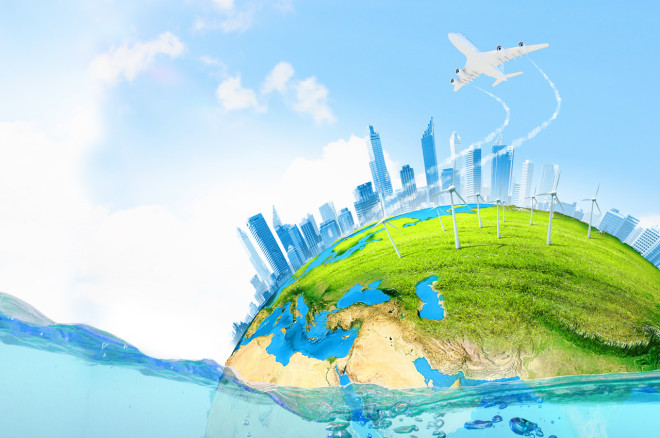There is no denying it, our Canadian winters can be long and brutally cold.
Across Canada, winter survival strategies vary. Some embrace the cold by engaging in outdoor winter activities such as skating, cross-country skiing, or snow boarding. Others go into hibernation mode, avoiding the outdoors as much as possible. Another common way to beat the winter blues is to build a beach getaway into the yearly budget.
However, aside from the dip in funds, a warm winter holiday comes with some downsides. Climate change is a serious and real issue and the plane that you are about to board will have an impact on our environment. In fact per person, greenhouse gas emissions from flying are typically higher than those generated by a road trip.
Just like your vehicle, today’s planes are powered by internal combustion engines. That means they burn fuel and leave a trail of emissions behind them. These greenhouse gas emissions are a concern because they act like a blanket for the earth. And that blanket is keeping the heat from the sun trapped under the covers.
The CO2 from aircraft emissions is also especially nasty because when released high in the atmosphere it triggers chemical reactions that contribute to a net warming effect. While we may crave warmer weather in winter, even a slight increase in global temperatures can have a negative impact on things like water cycles and biodiversity. Shrinking glaciers, droughts, floods, insect infestations – these are all bad news for humanity.
David Suzuki, Canada’s well-known environmental champion, shares some of the science behind net warming effect on his website. If a warm winter getaway is in your sights, there are other ways to minimize the carbon footprint while en route to paradise.
How to Offset the Environmental Impact of Air Travel
Let your fingers do the walking – This one is pretty simple. Book electronic tickets. You will have fewer things to misplace and will be helping to reduce paper waste.
Don’t Stop – Since a significant percentage of a plane’s carbon emissions are emitted during take off and landing, direct flights are the way to go.
Lighten Up – Channel your inner minimalist! Chances are you are going to be charged for your bags so packing light pays off in more than one way. The weight of all those bathing suits and flip flops will ultimately contribute to how much fuel the plane burns.
Dial Down – The heat that is. Lower your thermostat at home before you head out to the airport. You don’t want your furnace working overtime while you are lounging in the sun. Not too cold, though, or your pipes could freeze!
Switch off – Unplug unnecessary appliances at home like your computers, tvs, microwave and toaster. When you arrive at your destination, keep up the energy saving habit by turning off the tv, air conditioner and lights when you leave the hotel room.
Offset your travel – Most airlines have a carbon offset program. When you purchase a ticket, you will have the option to invest in an environmentally friendly initiative that can offset the negative environmental impact of your flight. Sure, it will add to the price of your ticket, but you’ll feel better knowing your trip is carbon neutral.
Keep your feet on the ground – Although gas prices are low, the airline industry has yet to pass on any savings to consumers. With few deals to be had and a fairly weak Canadian dollar it might make sense to stay put.
Whatever you chose to do this winter, make sure to find the time to enjoy the unique activities in your area. After all, they will only be on offer for a few more months!
About The Author

-
Serial Entrepreneur, Technologist and Inventor.
My objective is to develop useful products that have a net positive effect in the lives of those that use them and the environment that we live in.
CEO of Mission LED Lighting Company Ltd.
- 2017.05.24LED factsWhy Are Cars Switching to LEDs if They’re Too Bright?
- 2017.05.09Be green & saveHow to Easily Replace T8 Fluorescent Tubes With LED
- 2017.03.07Build a better future7 Things About Explosion Proof LED Lighting You Should Know
- 2017.02.28Be green & saveWhy We Love LED Grow Lights (And You Should, Too!)





Leave a Reply